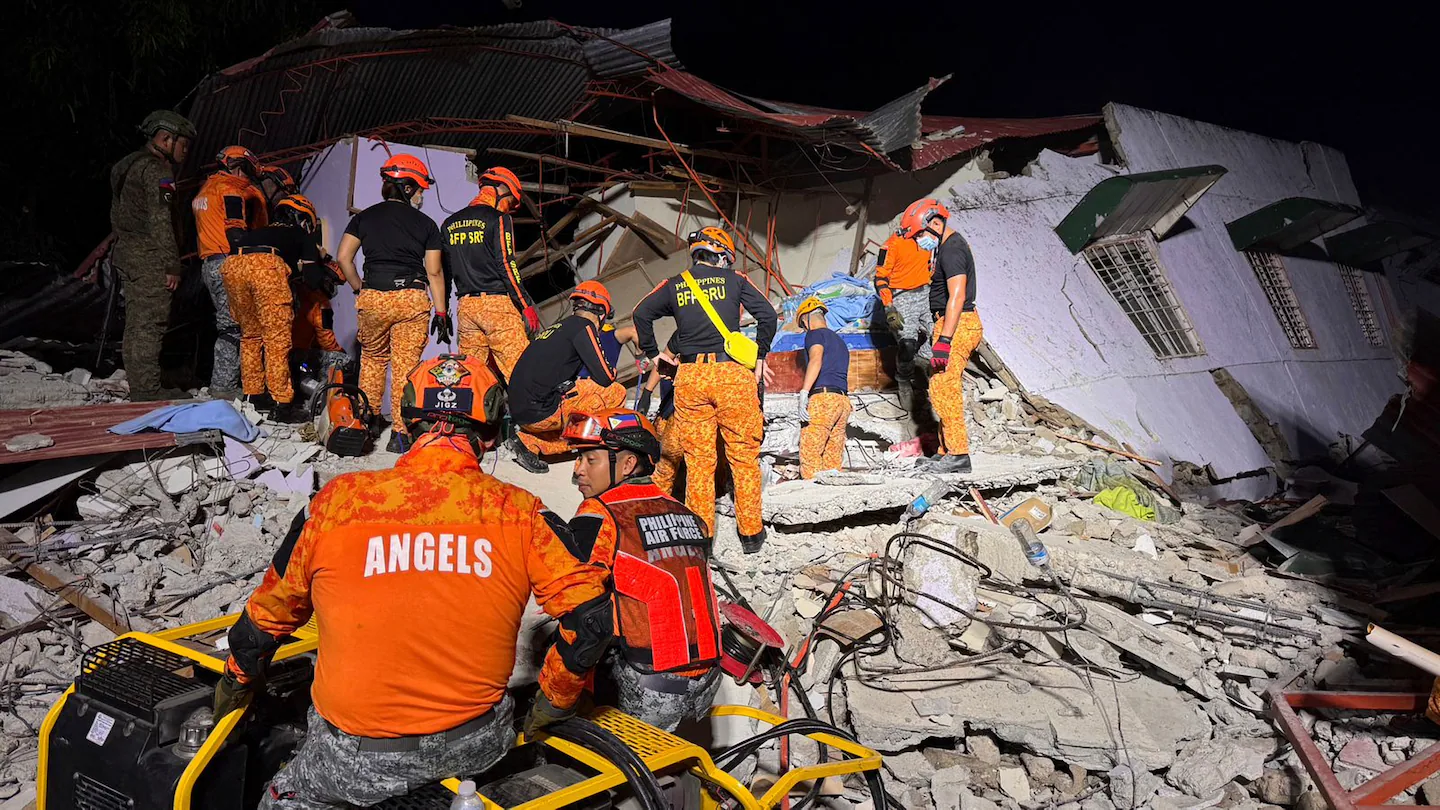
On Wednesday night, rescuers in orange and yellow hard hats used spotlights, a backhoe, and bare hands to sift through the rubble of concrete slabs, broken wood, and twisted iron bars for hours in a collapsed building in Bogo city. No survivors were found.
“We’re still in the golden hour of our search and rescue,” Office of Civil Defense deputy administrator Bernardo Rafaelito Alejandro IV said in a morning news briefing in Manila, the country’s capital. “There are still many reports of people who were pinned or hit by debris.”
The epicenter of the earthquake — set off by movement in an undersea fault line at a dangerously shallow depth of three miles — was approximately 12 miles northeast of Bogo, a coastal city of around 90,000 people in Cebu Province, where about half of the reported deaths occurred, officials stated.
The Philippine government is considering seeking help from foreign governments based on an ongoing rapid damage assessment, Alejandro said.
The United States, Japan, Australia, and the European Union expressed condolences.
“We stand ready to support the Philippine government’s response as friends, partners, allies,” MaryKay Carlson, US ambassador to the Philippines, said in a post on social media platform X.
Workers were trying to transport a backhoe to hasten search and rescue efforts in a cluster of shanties in a mountain village hit by a landslide and boulders, Bogo city disaster-mitigation officer Rex Ygot told The Associated Press early Wednesday.
“It’s hard to move in the area because there are hazards,” said Glenn Ursal, another disaster mitigation officer, who added that some survivors were brought to a hospital from the mountain village.
Deaths also were reported from the outlying towns of Medellin and San Remigio, where three coast guard personnel, a firefighter, and a child were killed separately by collapsing walls and falling debris while trying to flee to safety from a basketball game in a sports complex that was disrupted by the quake, town officials said.
The earthquake was one of the most powerful to batter the central region in more than a decade, and it struck while many people slept or were at home.
The Philippine Institute of Volcanology and Seismology issued a brief tsunami warning, advising people to stay away from the coastlines of Cebu and the nearby provinces of Leyte and Biliran due to possible waves of up to 3 feet.
No such waves were reported, and the tsunami warning was lifted more than three hours later. However, thousands of traumatized residents refused to return home and chose to stay in open grassy fields and parks overnight, despite intermittent rains.
Cebu and other provinces were still recovering from a tropical storm that battered the central region on Friday, leaving at least 27 people dead, primarily due to drownings and falling trees, knocking out power in entire cities and towns, and forcing the evacuation of tens of thousands of people.
Schools and government offices were closed in the quake-hit cities and towns while the safety of buildings was checked. More than 600 aftershocks have been detected after Tuesday night’s temblor, Philippine Institute of Volcanology and Seismology director Teresito Bacolcol said.
Rain-soaked mountainsides were more susceptible to land- and mudslides in a major earthquake, he warned.
“This was really traumatic to people. They’ve been lashed by a storm then jolted by an earthquake,” Bacolcol said. “I don’t want to experience what they’ve gone through.”
The Philippines, one of the world’s most disaster-prone countries, is frequently affected by earthquakes and volcanic eruptions due to its location on the Pacific “Ring of Fire,” an arc of seismic faults that encircles the ocean. The archipelago is also lashed by about 20 typhoons and storms each year.



